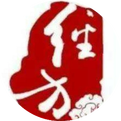Discussion on Exterior and Interior
In discussing the body as a whole, the physical body is considered the exterior (biao), while the internal organs (zangfu) are regarded as the interior (li). When referring to the physical body, the skin is the exterior, and the bones and flesh are the interior. In terms of internal organs, the bowels (fu) are the exterior, and the viscera (zang) are the interior. When discussing the meridians, the Taiyang (Greater Yang) and Yangming (Bright Yang) are considered exterior, while the three Yin (Sanyin) are regarded as interior, and Shaoyang (Lesser Yang) is classified as half exterior and half interior. Furthermore, within the exterior, there is a distinction between the outer and inner layers: Taiyang is the outermost layer of the exterior, while Yangming is the inner layer of the exterior. Within the interior, there is also a division: Taiyin (Greater Yin) is the outer layer of the interior, Shaoyin (Lesser Yin) is the middle of the interior, and Jueyin (Terminal Yin) is the innermost layer of the interior. Therefore, in the progression of cold damage (shanghan) through the meridians, it first affects Taiyang, then Yangming, followed by Shaoyang, Taiyin, Shaoyin, and finally Jueyin. The Taiyang’s bowel is the bladder (pangguang), and the Yangming’s bowel is the stomach (wei); both of these bowels store substances, excreting rather than storing, thus their meridians belong to the exterior. The Taiyin stores the spleen (pi), the Shaoyin stores the kidneys (shen), and the Jueyin stores the liver (gan), all of which store essence, retaining rather than excreting, thus their meridians belong to the interior. The Shaoyang’s organ is the gallbladder (dan), which stores bile; while it resembles a bowel, it also retains rather than excretes, thus its meridian is classified as half exterior and half interior, which is indisputable. The kidney, located beneath the liver, is the most deeply stored, and its meridian should belong to the innermost layer of the interior, yet it is instead classified as the middle of the interior, which raises questions. Is it not true that although the meridians are connected to the internal organs, the layers of exterior and interior are determined by their depth in the skin rather than the order of the internal organs? Moreover, this discussion only pertains to the foot meridians; if we consider the order of the hand meridians, there is also much to discuss. I suspect that the discussion in the “Neijing (Inner Canon) – Discussion on Heat Diseases” regarding the progression of cold damage through the meridians is modeled after the movement of Qi, where Jueyin is classified as one Yin, Shaoyin as two Yin, Taiyin as three Yin, Shaoyang as one Yang, Yangming as two Yang, and Taiyang as three Yang. However, this classification pertains to the order of external Qi and may not serve as a basis for understanding the pathogenesis. Furthermore, the theory of Qi movement is also flawed and untrustworthy.

